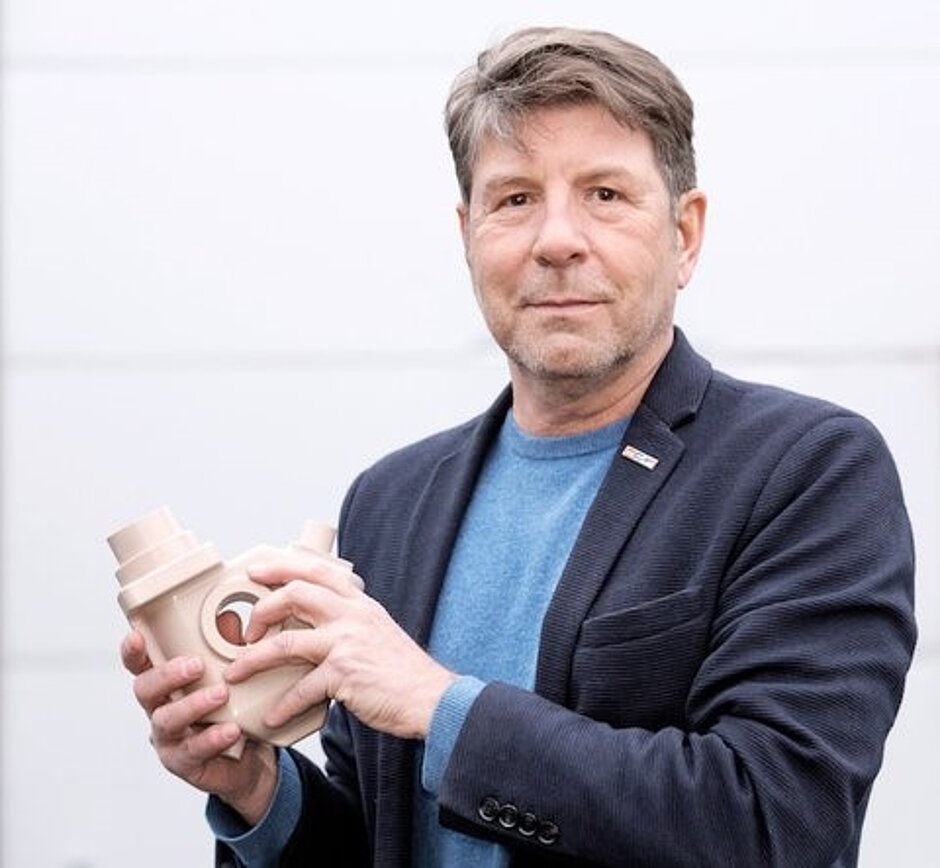Pattern and mould-making represent a special exhibitor group at Moulding Expo 2017, which will be welcoming visitors from May 30th-June 1st 2017 at Messe Stuttgart, and 3D printing is broadening the horizons of this corner of the industry.
This varied sector has changed enormously in the last few years. And companies are diversifying their operations to include tool-making to make the transition through the value chain more fluent.
This is according to Peter Gärtner from the Information Centre for Company Management in the German Association of Pattern and Mould Making (BVMF), who said this has been a trend that has been ongoing for years.
Indeed, many companies already cover the entire process chain, processing a wide range of materials extending from wood, the traditional pattern material, and many different plastics through to lightweight and non-ferrous metals along with steel. This also involves broad-based technological know-how and the willingness to face up to the challenge of increasingly more accurate tolerances - right down to the micrometre range.
The most important new technology is 3D printing, which has made it relatively easy to start series production, primarily objects in prototype construction and in pilot and small series manufacturing.
Gärtner noted that 3D printing is also used by customers of pattern and mould manufacturers. For example, foundries are increasingly manufacturing casting moulds directly using 3D sand printers, especially for prototype casts. Since a pattern set is no longer required in this case, this technology is starting to compete with traditional foundry pattern making. On the other hand, 3D printers are providing pattern and mould makers with new work opportunities, which must be utilised.
Gärtner mentioned as examples production planning and quality assurance of patterns for large moulds, e.g. for ship's engines. The 3D data are scaled and printed as a scaled-down model, thus making an unclear dataset clear. It can be more easily examined whether problems, for example, might occur during shaping.
"A printer can therefore be used creatively even if it will be a long time before a printer can print a ship's engine pattern set," he said.
Example from additive manufacturing: bracket made of stainless steel 1.4404.
Pattern and mould makers' stands at the German Association of Pattern and Mould Making pavilion will be complemented by the products and services exhibited at Moulding.
One company set to present the entire range includes HFM Modell- und Formenbau GmbH, Ostrach, which is making its Moulding Expo debut in 2017.
The company regards Moulding Expo as a "new fresh trade fair, which is very well organised."
HFM is convinced that Moulding Expo will become the "new leading trade fair" for the industry. The Ostrach-based company operates in the areas of automotive, aerospace engineering, tool making and mechanical engineering, and started to fully use 3D printing last year.
"We will focus on the topics of cubing - i.e the presentation of entire modules - mould making and additive manufacturing," they stated.
In addition to German customers, the company is expecting to welcome European customers, especially from neighbouring countries.
MEX is also important for HFM to obtain an overview of new developments and trends in the industry.
CP – Centrum für Prototypenbau, Erkelenz, supports product developers with prototypes and small series made of plastic and metal. The company will also be exhibiting in Stuttgart for the first time.
Besima Sümer, a member of the Board of Management of CP, said: "We were looking for another trade fair. The concept of Moulding Expo appealed to us. We were also impressed by the fact that the mood at the last trade fair was very good."
CP will focus on customers and interested parties from Germany and neighbouring countries.
Modec Tooling and Prototyping, Venlo, Netherlands, participated in Moulding Expo in 2015. Modec has chosen a different hall and a larger stand this time. The company wants to become more well-known in Germany. Modec comes originally from the area of foundry pattern making, but now offers a very wide portfolio with fluent transitions to associated areas of pattern making. The company also manufactures gauges, moulds and all other tools, which are required to produce a product, including engineering support. The proportion of foundry patterns now only stands at 25 per cent. At 40 per cent the automotive share is relative high while the remainder goes in all directions (artists, composites, apparatus construction, mechanical engineering ...).
The Dutch company relies on state-of-the-art technology, e.g. 3D printing and modern milling technologies. All materials ranging from wood and plastics through to non-ferrous metals are processed.
"We will concentrate on the area of automotive at the trade fair, namely on the complete process chain," said Bart Meijnen, CEO.
Source: eppm.com
×


